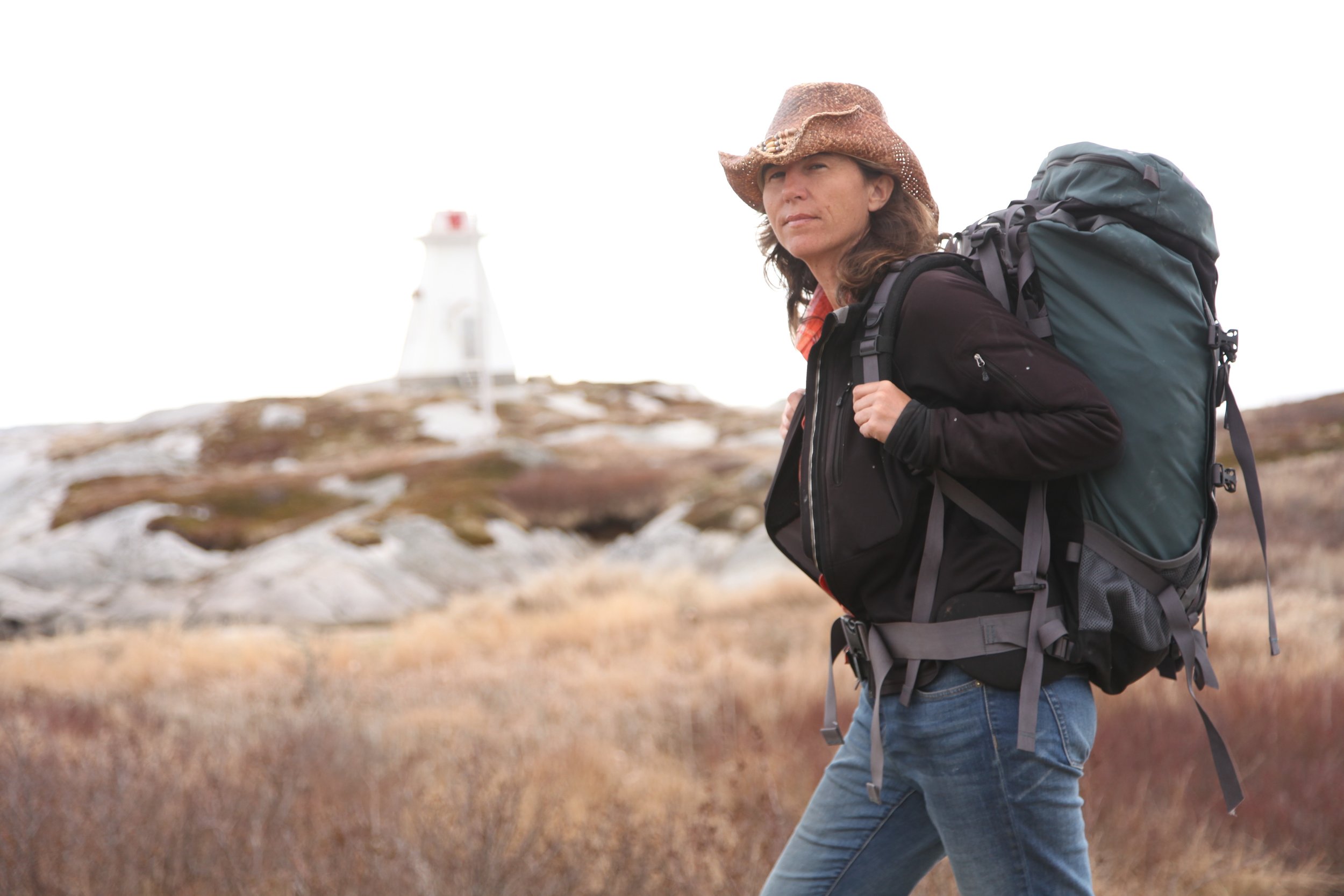500 Days in the Wild: Shadowing One Woman’s Epic Journey along the Trans Canada Trail
By Chris Knight
Rating: A-
Even before she’d begun, filmmaker Dianne Whelan called her cross-Canada trekking documentary 500 Days in the Wild. But 10 days into her journey, having barely started an almost-thousand-kilometre bike ride along an abandoned railway line that traversed the island of Newfoundland, she burned her schedule.
And so, even as 500 days doubled and tripled and then some, she kept with the title’s nice round number. 1,862 Days in the Wild doesn’t have the same ring, does it?
The resulting movie chronicles a deeply personal journey, and as such there are moments where Whelan struggles to connect with her audience. For instance: Why did she set out on this 24,000-kilometre voyage from St. John’s to Victoria, with a not-very-short side trip north to Tuktoyaktuk?
The reasons she gives are a little vague. “We used to live in a society,” she says in voiceover. “Now we live in an economy. We lost the heart.” It’s the kind of statement with which any disgruntled someone, right or left, woke or not, could agree. Right up there with: “Nothing’s more powerful than an idea whose time has come.” But… what idea exactly?
So, the philosophy is a little thin, much of it focused on praising the ways of the First Nations who were plying North America’s rivers and trails for millennia before Whelan’s ancestors arrived. (She’s mentioned in interviews that she’s of “settler” stock, tracing her Canadian heritage back 200 years on one parent’s side, 400 on the other.) The closing credits list more than 120 First Nations whose territories she has crossed, from the Anishinabewaki to the Wyandot.
And the physical beauty can’t be beat, whether it’s ice-caked northern rivers, choppy Lake Bras d’Or in Cape Breton, massive Lake Superior or vast Great Slave Lake, at 600-plus metres the deepest on the continent.
Much of Whelan’s travel consist of canoe journeys, even as she relates the fact that she has a great fear of open water and prefers to keep within swimming distance of shore at all times.
She often travels alone, but occasionally finds company both brief (strangers who give her shelter for a night or help repair her gear) and more long-term. She reconnects romantically with an old friend at one point, and I daresay if a couple can survive mid-winter portages and potential bear attacks, they’re probably good for whatever else comes their way.
It’s an epic achievement. Whelan, in her fifties and by her own admission not especially athletic, has become the first person to travel every kilometre of the Trans Canada trail.
And as a filmmaker who has documented others’ stories in the High Arctic and the base camp of Mount Everest, she knows a thing or two about extreme experiences. This one, mind you, is all hers. She’s just generous enough to share it with the rest of us.
500 Days in the Wild. Directed by Dianne Whelan. Starring Dianne Whelan. In theatres March 1.



